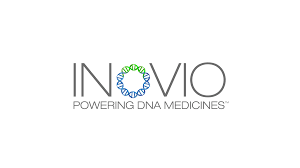
22 Feb Glioblastoma: Inovio’s Novel Combination of DNA Medication Plus Immunotherapy Boosts Survival
MedicalResearch.com Interview with:
 Jeffrey Skolnik, MD
Jeffrey Skolnik, MD
Senior Vice President, Clinical Development
INOVIO
MedicalResearch.com: What is the background for this technology? Would you tell us a little about the brain tumor, Glioblastoma Multiforme? How common is it, whom does it primarily affect?
Response: Glioblastoma (GBM) is the most common malignant brain tumor, affecting more than 10 thousand people each year in the United States. Most people diagnosed with GBM are above the age of 60 years, although GBM can be diagnosed at any age, including in children and young adults. Despite decades of research, GBM remains almost universally fatal. GBM is a tumor of the glial cells of the brain, and current therapies are directed at removing tumor with surgery and killing residual tumor cells with radiation and chemotherapy.
More recently, with the introduction of immunotherapies such as immune checkpoint inhibitors (ICI) for the treatment of cancer, clinical studies have tried to add this promising technology to the treatment of GBM. Unfortunately, despite success in other types of cancer, ICIs have not demonstrated any clinical benefit in treating GBM. Newer clinical studies aim at introducing a combination of newer therapies together to try to tackle this terrible disease, and INOVIO’s GBM-001 study is one such example of an innovative approach to treating GBM.

Dr. Skolnik
MedicalResearch.com: What are the main findings of the studies of INO-5401, in combination with INO-9012, Regeneron’s PD-1 checkpoint inhibitor Libtayo® (cemiplimab), radiation and chemotherapy in the treatment of glioblastoma?
Response: In INOVIO’s landmark GBM-001 study, we’ve combined the DNA medicines INO-5401, DNA plasmids encoding for the known tumor antigens human telomerase (hTERT), Wilms Tumor-1 (WT-1), and prostate specific membrane antigen (PSMA), together with our DNA plasmid INO-9012, encoding for human interleukin-12 (IL-12), together with the programmed cell death receptor-1 (PD-1) inhibitor cemiplimab (Libtayo®), being co-developed by Regeneron and Sanofi, with radiation and chemotherapy, in order to build a cancer antigen-specific T cell repertoire that is activated against GBM cells. These novel treatments work together, in combination with standards of care therapy (radiation and temozolomide).
In our GBM-001 study, we were able to successfully combine these novel medicines together, and to demonstrate an immunological response to the antigens encoded within INO-5401, in the peripheral blood of patients on the trial. More importantly, we were able to show promising evidence of clinical activity, prolonging progression-free survival at 6 months, and overall survival at 12 and 18 months, when compared with historical controls (Stupp, 2005; Hegi, 2009).
MedicalResearch.com: What should readers take away from your report?
Response: This is a first-of-its-kind clinical trial in which a DNA medicine encoding for tumor-specific antigens is combined with an ICI, and given together with the standard of care, in patients with newly diagnosed GBM. This study shows clear evidence of an immunological response to this novel combination and demonstrates the potential importance of T cells against GBM. The combination of INO-5401 with INO-9012 and cemiplimab, together with the standards of care of radiation and chemotherapy, demonstrated an acceptable safety profile, and we look forward to continued analysis of our clinical data and to next clinical steps.
MedicalResearch.com: What other cancers might be amenable to treatment innovation with this platform?
Response: INOVIO has previously studied DNA medicines similar to, if not in part identical to, INO-5401 in prostate cancer and in a variety of solid tumors, such as pancreatic cancer, lung cancer, and colon cancer. In these studies, we were able to show an immune response to our DNA medicines, and a correlation between immune response and potential clinical improvement. Given the prior evidence of immune response in these studies, and our current and ongoing clinical cancer studies, there is no reason to believe that other cancers would not also be amenable to either identical, or similar therapies. INOVIO’s DNA medicines platform allows for the adaptation of its plasmids to address essentially any tumor antigen for which the DNA sequence is known, and allows for incorporation of that sequence into a synthetic DNA plasmid that can be provided to the patient – in combination with our CELLECTRA® device – in order to generate a robust immune response that we hope is capable of killing tumor cells and ultimately extending survival.
Interestingly, our DNA medicines are not limited to plasmids encoding for tumor antigens. We are continuing to innovate in the cancer therapeutic space, and newer pre-clinical programs have designed DNA-encoded plasmids that can build fully functional proteins, such as monoclonal antibodies, or bi-specific T cell antibodies. Monoclonal and bi-specific antibodies have been approved for the treatment of various cancers but producing and dosing such antibodies often proves challenging. INOVIO hopes to solve these problems using its DNA-encoded antibody program. Importantly, the first of these novel medicines, encoding for an antibody against the Zika virus, is a first-in-human, first-in-class molecule already in the clinic in clinical trials, and we look forward to expanding trials like these in the future.
MedicalResearch.com: Is there anything else you would like to add?
Response: We are excited, privileged and proud to be part of a true revolution in the treatment of cancer. Being able to turn on the human immune system – to use the body as its own champion and warrior in the fight against cancer – has long been the goal of cancer physicians and scientists. By using INOVIO’s DNA medicines, coupled with our CELLECTRA® device, we are finding ways to harness the power of our own protective cells, while providing a safe and tolerable therapeutic modality that aims to improve survival and overall well-being in treating human diseases.
Citation: Abstract presented at Society for Neuro-Oncology 2020 Annual Meeting
Title: “INO-5401 and INO-9012 delivered intramuscularly (IM) with electroporation (EP) in combination with cemiplimab (REGN2810) in newly diagnosed glioblastoma”
Presenting Author: Dr. David Reardon
[subscribe]
[last-modified]
The information on MedicalResearch.com is provided for educational purposes only, and is in no way intended to diagnose, cure, endorse or treat any medical or other condition. Always seek the advice of your physician or other qualified health and ask your doctor any questions you may have regarding a medical condition. In addition to all other limitations and disclaimers in this agreement, service provider and its third party providers disclaim any liability or loss in connection with the content provided on this website.
Last Updated on February 22, 2021 by Marie Benz MD FAAD
